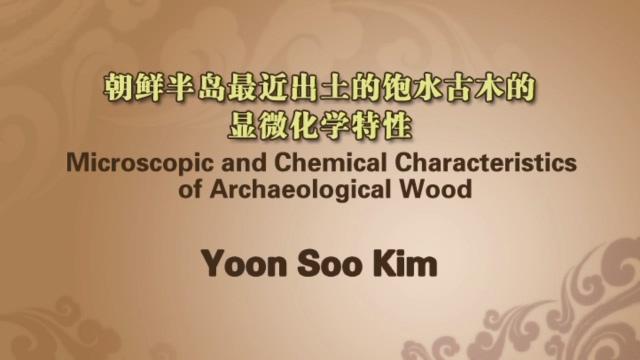会议名称:2010木文化国际研讨会——古木文化产业和遗产保护与修复
会议时间:2010年10月23日-24日
会议地点:中国·陕西
报告嘉宾:Yoon Soo KIM
教授 韩国全南国立大学 校长
报告摘要:Studies of archaeological woods contribute to reveal the past history of the flora and can shed light also on the civilization of our ancestors. Understanding the cause of deterioration of archaeological woods is crucial for developing technology of restoring wooden artifacts of historical and cultural importance. Understanding the cause of deterioration of archaeological woods has intensified over the world, recognizing the importance of this fundamental knowledge in preserving more effectively ancient wood of historical and cultural importance after recovery.
Archaeological woods submerged in water for long periods can undergo chemical and structural alterations. Some researchers once suggested that chemical processes would be taking place preferentially in waterlogged situations. Hence abiotic reactions, such as hydrolysis, are considered to play an important role in the degradation of waterlogged ancient woods. However, more recent studies have provided evidence to suggest that biological factors mainly are responsible for the deterioration of wood subjected to waterlogging.
Marines and lake waters provide conditions which do not favor rapid deterioration of wood, and consequently in many cases archaeological woods recovered from sediments or waters of oceans and lakes have been found to be well preserved. Prolonged exposition under these conditions results in the waterlogging of wood. Diminishing oxygen availability with increasing depth of water and in sediments in the floors of oceans and lakes may be the main reason for the long life of archaeological woods, as more aggressive wood-decay fungi are not able to tolerate these conditions.
Various microorganisms can degrade wood under varied environmental conditions. Soft rot fungi, can tolerate a wide range of temperature, humidity and pH conditions, and attack a variety of wood substrates. However, bacteria are more tolerant to conditions that are considered extreme or more unfavorable to fungi (e.g. high lignin and extractive content in wood, high preservative loading, and low levels of oxygen). It is now well documented that bacteria are able to adapt to harsh environmental conditions and can tolerate large concentrations of chemicals, for example, toxic preservatives.
In this presentation, microscopic, ultrastructural and chemical characteristics of waterlogged archaeological woods which were excavated from Sweden, Germany, New Zealand and Korea will be presented in comparison with dry-type archaeological woods, which have been examined in our laboratories since 1990’s. Deterioration agents of waterlogged archaeological woods will be also presented. Current status of wooden cultural properties and conservation policies in Korea will be also discussed.
责任编辑:iwcs24P


 10,101
10,101

